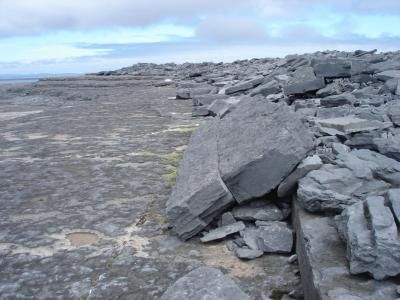
Mysterious Moving Boulders Are Lifted By Storms

For years, geologists have puzzled over mysterious boulders that litter the desolate coastline of Ireland's Aran Islands. When nobody is looking, the massive rocks somehow move on their own.
What unseen hand is capable of ripping a multitude of heavy boulders from the craggy cliffs below and tossing them so far inland?
While some researchers contend that only a tsunami could push these stones, new research in The Journal of Geology finds that plain old ocean waves, with the help of some strong storms, did the job. And the waves are still at it.
The sizes of the boulders in the formations range "from merely impressive to mind-bogglingly stupendous," writes geoscientist Rónadh Cox, who led the research with her students from Massachusetts' Williams College
One block the team studied weighs an estimated 78 tons, yet was still cut free from its position 36 feet (10 meters) above sea level and shoved farther inland.
The team used two methods to nail down waves as the culprit. They compared modern high-altitude photos of the coastline to a set of meticulous maps from 1839 that identified the location of the boulders' ridges — nearly 100 years after the most recent tsunami to hit the region, which struck in 1755.
The comparison revealed that boulders moved inland over the years, some at an average rate of nearly 10 feet (3 meters) per decade.
Sign up for the Live Science daily newsletter now
Get the world’s most fascinating discoveries delivered straight to your inbox.
In addition, the team used radiocarbon dating to pinpoint the time when tiny clams secreted in the boulders' cracks were removed from the ocean, a parameter that indicates when waves tossed the peculiar rocks on land. Some appeared in the last 60 years.
"There's a tendency to attribute the movement of large objects to tsunami," Cox said. "We're saying hold the phone. Big boulders are getting moved by storm waves."
This story was provided by OurAmazingPlanet, a sister site to LiveScience. Follow OurAmazingPlanet for the latest in Earth science and exploration news on Twitter @OAPlanet and on Facebook.












